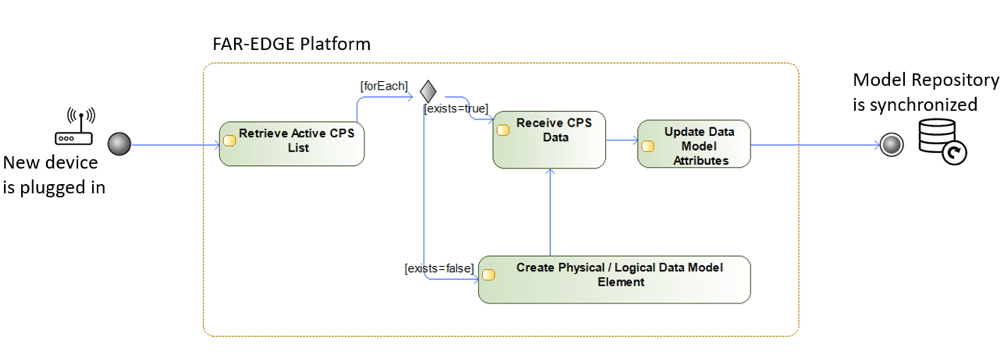Accurate simulations of all production processes have crucial importance to make decisions aimed to speed up the performance improvement of a shop floor. Applying discrete simulation techniques to a traditional shop floor can be a process which consumes a lot of resources and time because of the initial data inaccuracies. Furthermore, even small variations of production parameters can lead to divergent simulation results compared to the actual system.
In the industry 4.0 context, the shop floor is made by self-monitoring production machines and robots, namely CPS, with the capability to share their own state information with other stakeholders. Through a connection layer, this information can be exchanged and stored and used for achieving more realistic simulation input data which, in turn, leads to more accurate forecasting capabilities. In this way, the factory behaviour can be accurately predicted in advance.
Thanks to this quasi-real-time mirroring of real elements into their virtual representation, it is possible to simulate on current data thus exploiting simulation potentials not only in the factory design and planning phase but also in the operative one. This allows performing what-if analysis on the current production situation in order to support decision-making processes.
It is possible to improve the reliability of simulations forecasting using real-to-digital synchronization functionalities. Two main use cases have been identified:
- Data Model Synchronization
- Plug & Produce
1) Data Model Synchronization
This section is meant to explain how the update of the data model is done, using data of the active CPS coming from the data bus.
A main requirement for the simulation data residing on the platform is to maintain them updated thus achieving a reliable mirroring of the real factory. This requires that, once the database is modelled and populated, mechanisms are in place to support updates whenever new data coming from the shop floor is available. To achieve this result, the data-base must be connected using the monitor application with the source of the data.
Preset: The CPS structure is already modelled in the data model.

Data Model Synchronization
- As first step the list of the available CPS is requested, this list is kept up to date using the discovery functionalities of FAR-EDGE.
- or each CPS which has a corresponding element in the data-base (see check exists=true) the current value of the CPS is retrieved from the shop floor.
- As last step, the CPS attribute is updated in the model repository.
If the CPS does not have a corresponding element in the data repository, the “Plug and Produce” scenarios are executed.
2) Plug & Produce of a known device
This scenario explores the possibility of connecting a new sensor to the shop floor without having to update the simulation data model beforehand.

Plug & Produce
In the plug and produce scenario we distinguish two possibilities:
- the new device has a known data structure defined as an Archetype.
- there is not sufficient information about the data structure, no Archetype has been found.
In the first case, an element with all the attributes of the known Archetype is created and updated with the coming data. In the second case, the data can be stored in a raw format for future processing.

